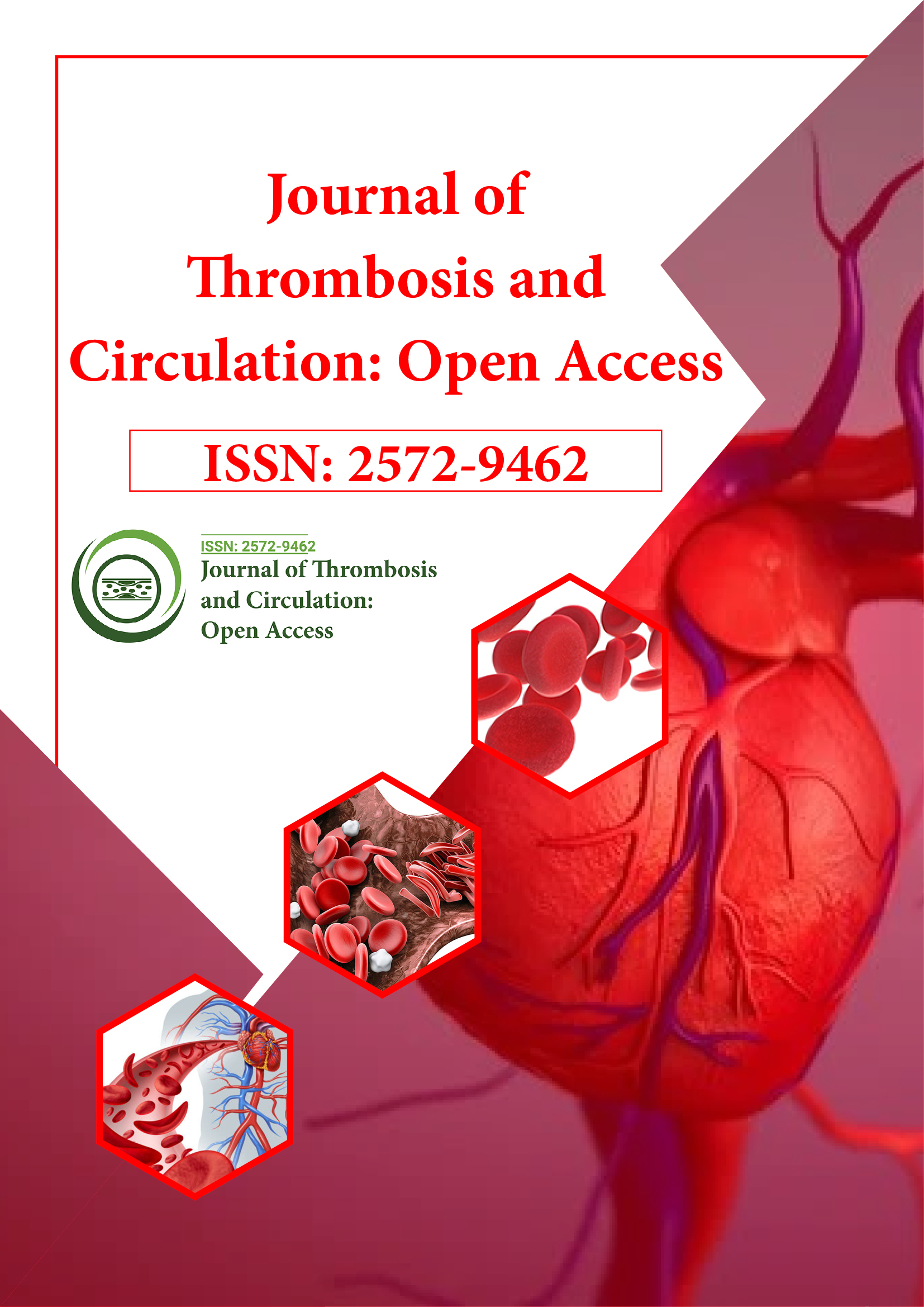Indexed In
- RefSeek
- Hamdard University
- EBSCO A-Z
- Publons
- Google Scholar
Useful Links
Share This Page
Journal Flyer

Open Access Journals
- Agri and Aquaculture
- Biochemistry
- Bioinformatics & Systems Biology
- Business & Management
- Chemistry
- Clinical Sciences
- Engineering
- Food & Nutrition
- General Science
- Genetics & Molecular Biology
- Immunology & Microbiology
- Medical Sciences
- Neuroscience & Psychology
- Nursing & Health Care
- Pharmaceutical Sciences
Perspective - (2022) Volume 8, Issue 3
Significance of Splenic Vein Thrombosis in Chronic Pancreatitis
Received: 25-Apr-2022, Manuscript No. JTCOA-22-17005; Editor assigned: 28-Apr-2022, Pre QC No. JTCOA-22-17005(PQ); Reviewed: 12-May-2022, QC No. JTCOA-22-17005; Revised: 19-May-2022, Manuscript No. JTCOA-22-17005(R); Published: 26-May-2022, DOI: 10.35248/2572-9462.22.8.189
Description
Splenic vein thrombosis is described by all types of hyper coagulant disorders, whether congenital or acquired. However, in this disease, local intra-abdominal events, with or without hyper coagulable disorders, directly leads to a significant proportion of splenic vein thrombosis. The main causes are pancreatitis and pancreatic cancer due to the close contact between the splenic vein and the pancreas. Pancreatitis is the causative event, and isolated splenic vein thrombosis is found in up to 65% of cases. Splenic vein thrombosis has also been reported after abdominal injury and abdominal surgery. This complicates 11% of all splenectomy procedures, but is common in patients who have had their splenectomy removed for haematological reasons. Therefore, conditions that require splenectomy such as myeloproliferative disorders may be more "coagulated" than the surgery itself. Splenic vein thrombosis has historically been associated with splenectomy for Immune Thrombocytopenic Purpura (ITP). This association is most likely due to the association between ITP and APLS and describes both ITP and splenic vein thrombosis.
SVT is a rare symptom of Venous Thromboembolism (VTE). VTE occurs in normal areas, deep vein thrombosis and pulmonary embolism in the lower extremities occur in approximately 70-270 cases with an SVT incidence of at least 1/25. In addition, it has been reported that the incidence of SVT varies widely. This depends on the type of data source, the difference in diagnostic tests, the location, or the type of accidental or symptomatic SVT considered.
PVT is the most common form of SVT. A large population study evaluating more than 23,000 consecutive necropsies reported a prevalence of 1.0%, and a large multicentre study in Sweden reported an incidence of 3.7 cases per 100,000 personyears.
BCS is the least common symptom of SVT, with reported incidences of approximately 1-2 cases per million people per year. The estimated prevalence of BCS varies from country to country, with approximately 1 to 4 cases per million people up to 5-7 cases per million people in the western eastern United States.
The distribution of SVT age and gender is uneven and varies slightly depending on the site of thrombosis. Patients with BCS tend to be the youngest, especially in Asian countries with the highest incidence between 20 and 40 years. This difference is less pronounced in Western countries, but BCS patients are still about 10 years younger than PVT patients (eg, 50-61 and 45-54 years in the Italian and US cohorts, respectively).
SVT has long been defined as "primary" or "secondary", depending on the presence or absence of associated abdominal (local) or systemic risk factors. While such a distinction is not always clear in clinical practice, recent reports have reduced the number of (primary) events that are not truly triggered by new risk factors, accounting for 15% to 27% of patients.
The relative incidence of risk factors depends on age, financial situation, geographic area, and location of thrombosis. For example, local causal factors are rare in BCS, but rare in PVT and MVT. Therefore, cirrhosis, abdomen, cirrhosis, abdominal cancer, intra-abdominal inflammation, and surgery are the most common risk factors for PVT/MVT.
Citation: Shah J (2022) Significanse of Splenic Vein Thrombosis in Chronic Pancreatitis. J Thrombo Cir. 8:189
Copyright: © 2022 Shah J. This is an open-access article distributed under the terms of the Creative Commons Attribution License, which permits unrestricted use, distribution, and reproduction in any medium, provided the original author and source are credited.
